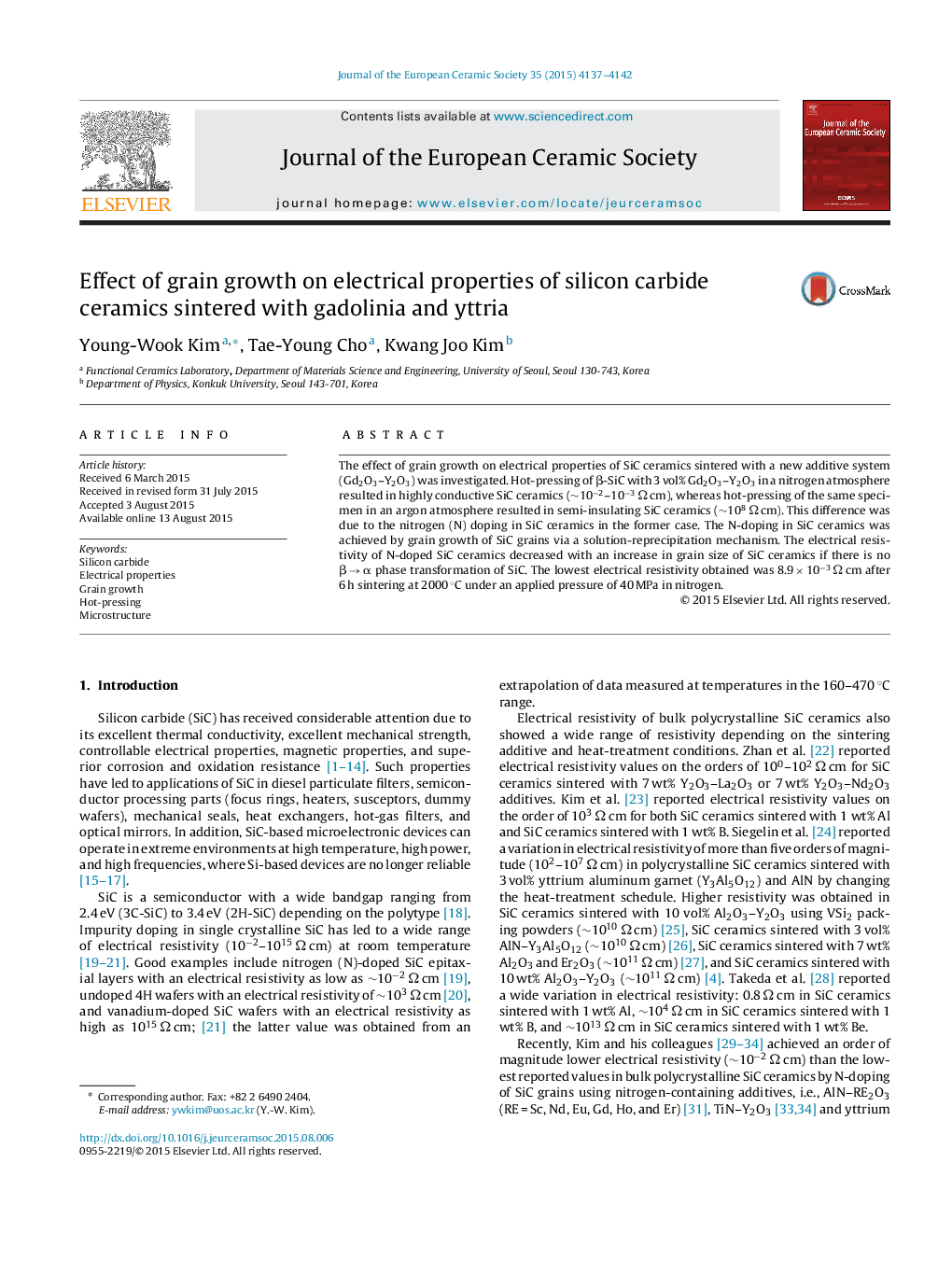| Article ID | Journal | Published Year | Pages | File Type |
|---|---|---|---|---|
| 10629340 | Journal of the European Ceramic Society | 2015 | 6 Pages |
Abstract
The effect of grain growth on electrical properties of SiC ceramics sintered with a new additive system (Gd2O3-Y2O3) was investigated. Hot-pressing of β-SiC with 3 vol% Gd2O3-Y2O3 in a nitrogen atmosphere resulted in highly conductive SiC ceramics (â¼10â2-10â3 Ω cm), whereas hot-pressing of the same specimen in an argon atmosphere resulted in semi-insulating SiC ceramics (â¼108 Ω cm). This difference was due to the nitrogen (N) doping in SiC ceramics in the former case. The N-doping in SiC ceramics was achieved by grain growth of SiC grains via a solution-reprecipitation mechanism. The electrical resistivity of N-doped SiC ceramics decreased with an increase in grain size of SiC ceramics if there is no β â α phase transformation of SiC. The lowest electrical resistivity obtained was 8.9 Ã 10â3 Ω cm after 6 h sintering at 2000 °C under an applied pressure of 40 MPa in nitrogen.
Related Topics
Physical Sciences and Engineering
Materials Science
Ceramics and Composites
Authors
Young-Wook Kim, Tae-Young Cho, Kwang Joo Kim,
